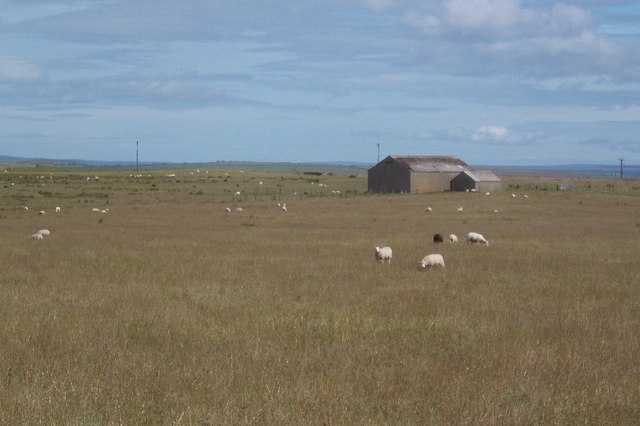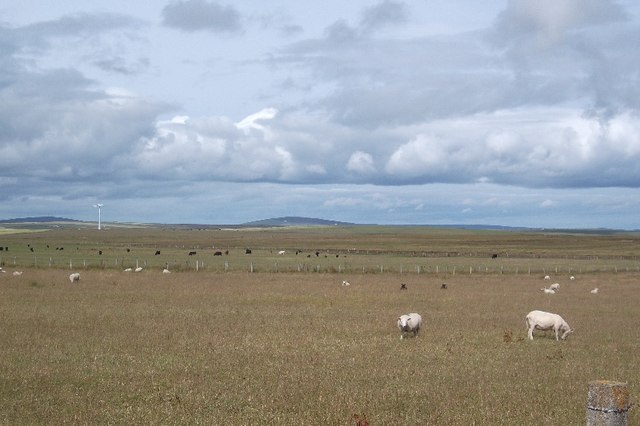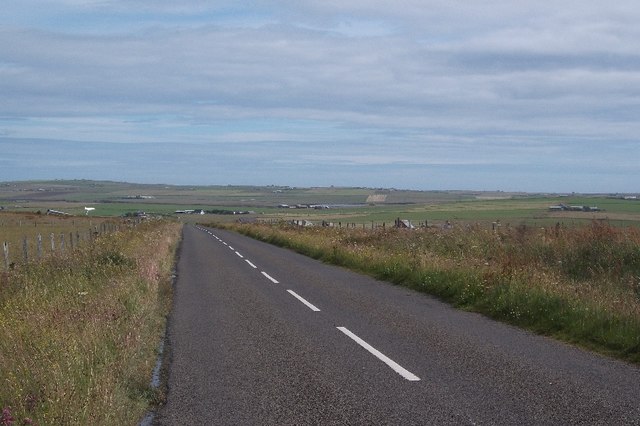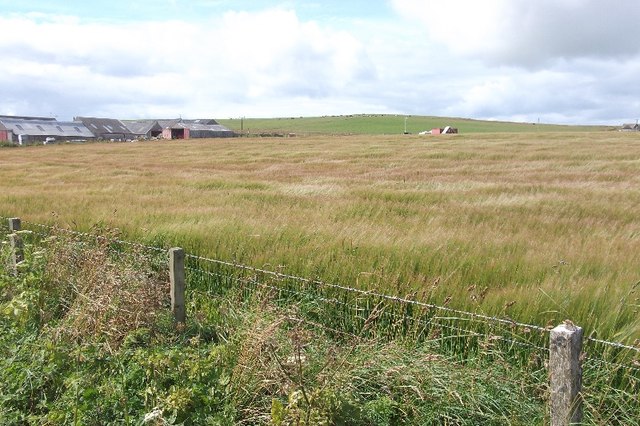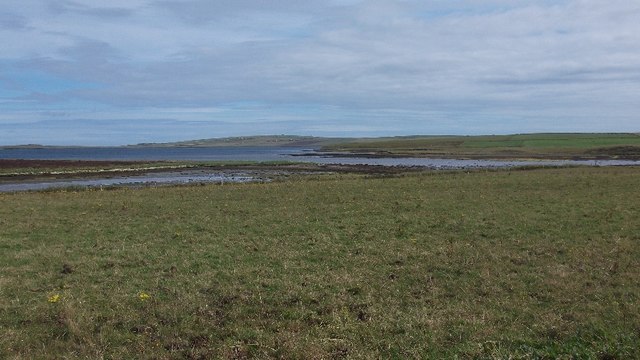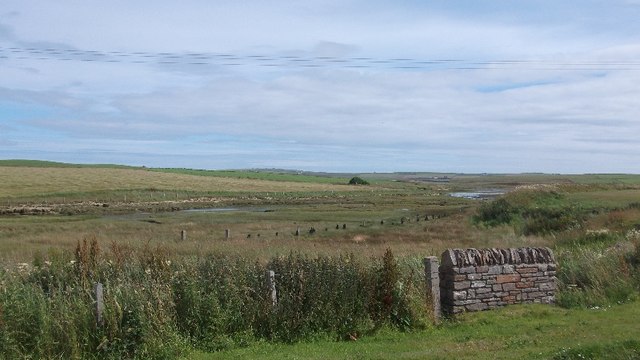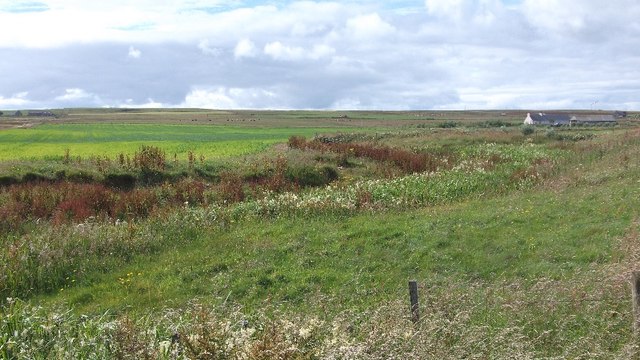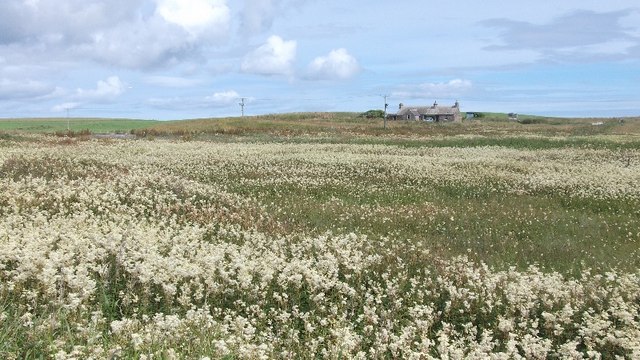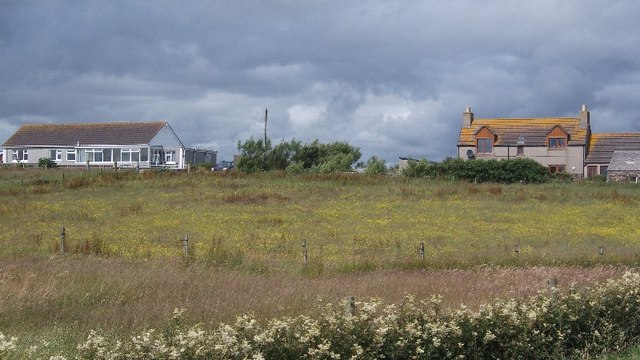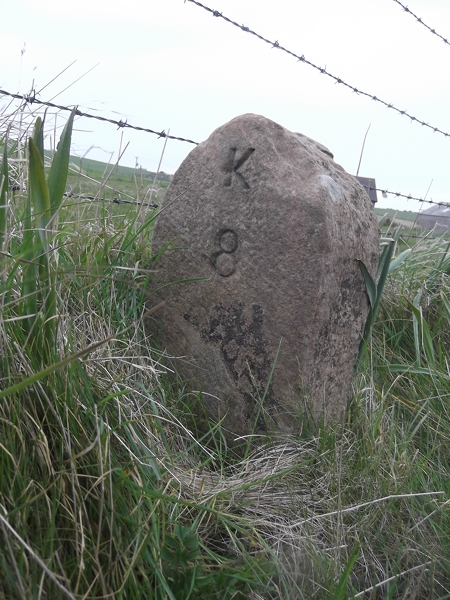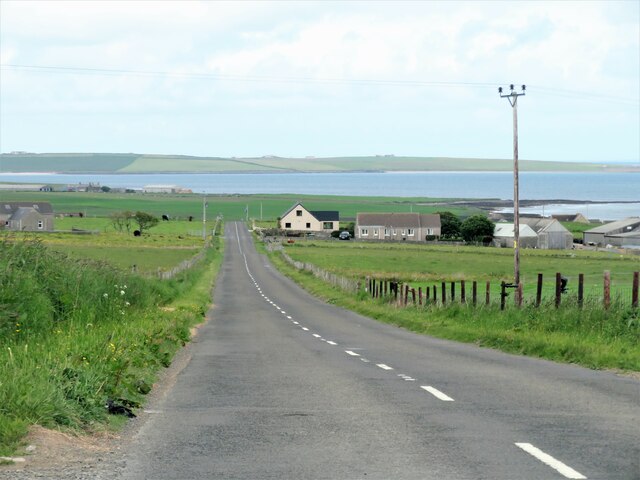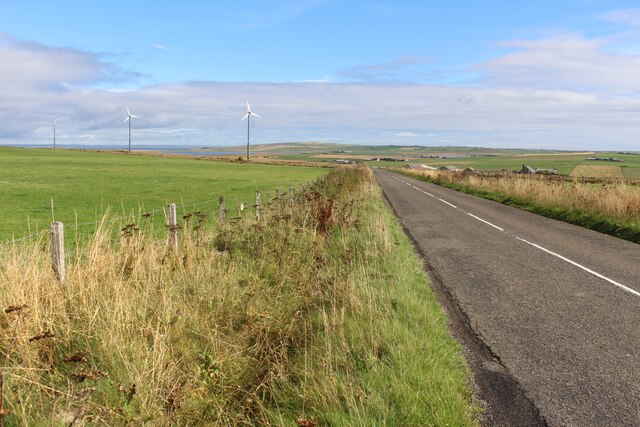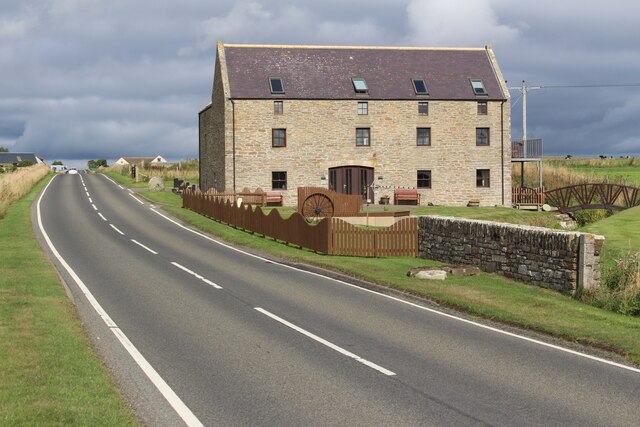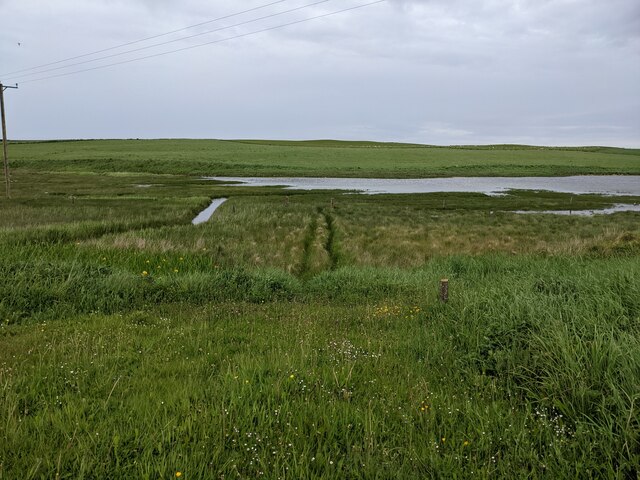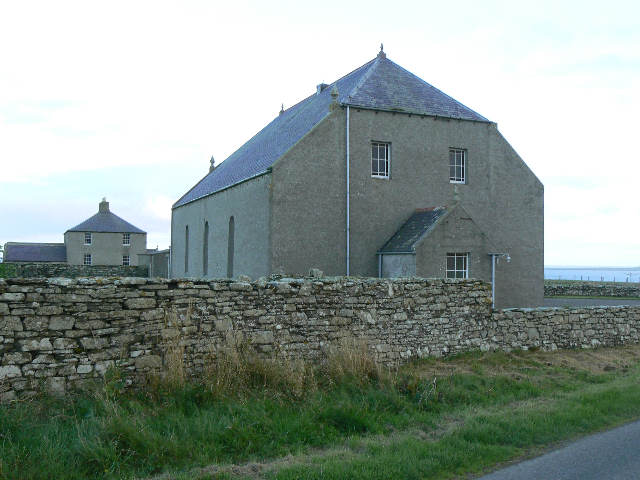Bay of Suckquoy
Bay in Orkney
Scotland
Bay of Suckquoy
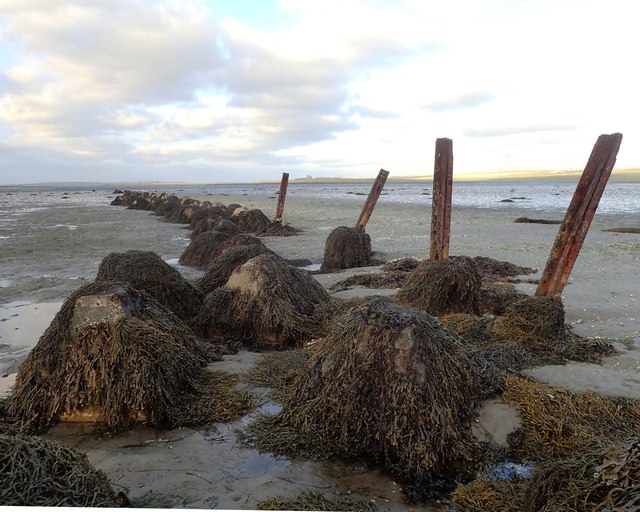
The Bay of Suckquoy is a picturesque bay located on the eastern coast of the Orkney Islands, Scotland. It lies approximately 10 miles north of the town of Kirkwall and is nestled between the parishes of Deerness and St. Andrews. The bay is surrounded by stunning natural beauty with rolling hills and rocky cliffs.
The Bay of Suckquoy is renowned for its rich historical and archaeological significance. It is home to the remains of an ancient settlement, which date back to the Neolithic period. The settlement consists of several well-preserved stone structures, including houses and chambered cairns, providing valuable insights into the lives of the early inhabitants of Orkney.
Furthermore, the bay is a haven for wildlife enthusiasts. Its tranquil waters are often frequented by various bird species, including puffins, razorbills, and guillemots, which nest on the cliffs during the breeding season. Seals can also be spotted basking on the rocks, adding to the bay's natural charm.
Visitors to the Bay of Suckquoy can indulge in outdoor activities such as hiking, birdwatching, and exploring the archaeological sites. The bay offers breathtaking views of the surrounding landscape, with rugged cliffs and the vast expanse of the North Sea stretching out before you.
Overall, the Bay of Suckquoy is a hidden gem in the Orkney Islands, offering a unique blend of natural beauty, historical significance, and wildlife diversity.
If you have any feedback on the listing, please let us know in the comments section below.
Bay of Suckquoy Images
Images are sourced within 2km of 58.920871/-2.8246565 or Grid Reference HY5204. Thanks to Geograph Open Source API. All images are credited.
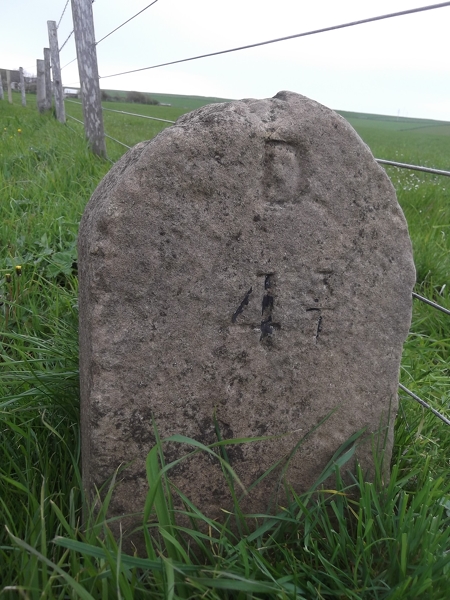
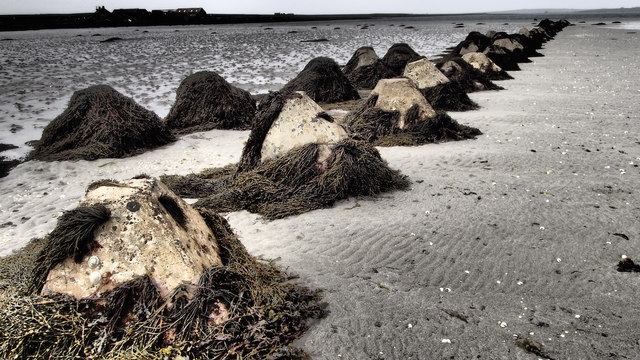
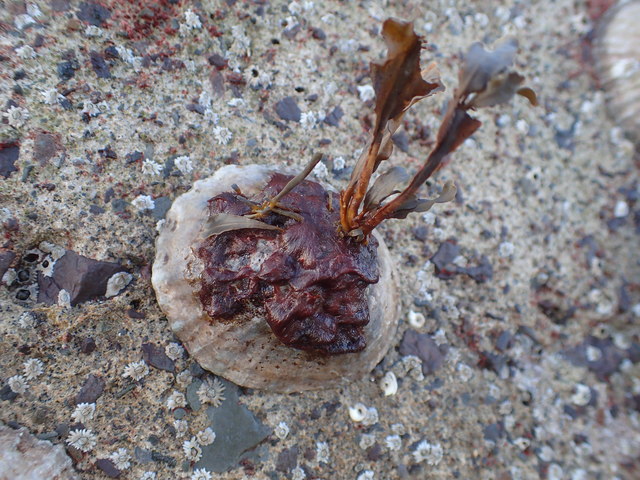
Bay of Suckquoy is located at Grid Ref: HY5204 (Lat: 58.920871, Lng: -2.8246565)
Unitary Authority: Orkney Islands
Police Authority: Highlands and Islands
What 3 Words
///entitles.pace.directs. Near Tankerness, Orkney Islands
Nearby Locations
Related Wikis
St Peter's Pool, Orkney
St Peter's Pool is a bay in the East Mainland of Orkney, Scotland. This bay was the site of significant coastal defences during World War II, when a German...
Mine Howe
Mine Howe is an Iron Age subterranean man-made chamber dug 6 meters (20 feet) deep inside a large mound. It is located in the Tankerness area of Orkney...
Toab, Orkney
Toab is a parish on the Orkney Mainland, situated in the East Mainland. Toab is located off the A960 road at the head of Deer Sound on the Mainland, Orkney...
Holm, Orkney
Holm (pronounced /hæm/ ), also spelled Ham, is a parish on Mainland, Orkney.An adjacent Sound, running between Mainland, and Burray, is named after Holm...
Tankerness
Tankerness is a district in the St Andrews parish in Mainland, Orkney, Scotland. Essentially a peninsula, it is about 13 kilometres (8 mi) south-east of...
St Andrews, Orkney
St Andrews is a parish on Mainland, Orkney in Scotland. It is located east of the town of Kirkwall and the parish of St Ola and lies north of Holm and...
Deerness
Deerness (, locally , Old Norse: Dyrnes) is a quoad sacra parish (i.e. one created and functioning for ecclesiastical purposes only) and peninsula in Mainland...
Lamb Holm
Lamb Holm is a small uninhabited island in Orkney, Scotland. The Italian Chapel, constructed during the Second World War, is the island's main attraction...
Nearby Amenities
Located within 500m of 58.920871,-2.8246565Have you been to Bay of Suckquoy?
Leave your review of Bay of Suckquoy below (or comments, questions and feedback).
